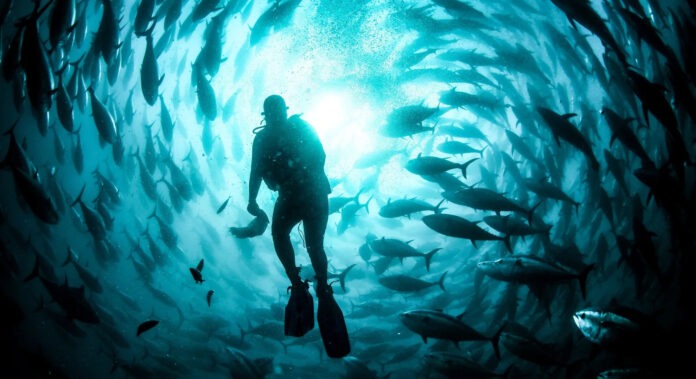For the last seven years, Hawaii-based Ocean Era has been working to bring a fish farm demonstration to Florida’s Gulf Coast. Last month, the Environmental Protection Agency approved a permit that allows the company to move forward with its plans.
The demonstration project calls for up to 20,000 red drum or red fish in a net pen with multiple mooring anchors. The fish farm would be located in the Gulf about 40 miles off the coast of Sarasota County in water that is about
“The pen will be designed so that it can be submerged 30 to 45 feet below the surf surface, so at night or when a storm is coming through, the net pen can be submerged,” said Ocean Era founder Neil Anthony Sims. “We think as people look at this, they’re going to come to understand this is a great opportunity for producing delicious seafood, for creating employment opportunities and it is going to be a spectacular fishing location. Whenever you put structure out in the ocean whether it be a fish farm or an oil rig or a fish aggregating device, fish will gather around that and I think the Florida fishing community is going to really love offshore aquaculture.”
Sims says he hopes to show the Gulf Coast community that offshore aquaculture is a safe and sustainable option for growing and harvesting fresh seafood locally.
“At the moment, we are importing red drum from Mauritius on the other side of the planet. They are farming them there and now they are shipping the fish back to us here. That makes no environmental sense in terms of the carbon footprint of those fish, but it is also jobs that we could be creating here in the US,” said Sims.
Ocean Era’s efforts have not come without pushback. Environmental groups have joined forces to express their opposition to the project. One of those groups is Suncoast Waterkeeper.
Executive Director Abbey Tyrna says there are a number of concerns that she and others have about the project, which would be the first of its kind in the Gulf.
“Not only is there a concern for nitrogen pollution, which is something that local governments on the Suncoast have worked really hard to eliminate from our waters, now this is a direct input into our waters of nitrogen that fuels harmful algal blooms. That is a prominent concern, but then also the disease that are known to spread from these farms into the wild population.” said Tyrna. “We are also worried about harm to endangered species, especially sea turtles that are going to congregate around where food is provided, so what kind of harm is it for them given that the cage is now monofilament line, which can be harmful to all kinds of species regarding entanglement, given that it is really hard to see. Taken together, it is just not a project that we would like to see here on the Suncoast.”
Sims said he understands the concerns, but said studies have proven that in deep waters that are far enough offshore, there are no significant environmental impacts.
“Images we have of the offshore fish farm here in Kona, Hawaii show that it really has minimal impact on water quality. This is validated by the fact that cauliflower coral grows profusely on the structures on the fish farm. For the fish farm it actually becomes a problem, but they are taking those cauliflower coral and working with NOAA and other environmental groups to use that for replanting on the reefs here in Hawaii. That is validation that the water quality on the fish farm really is not impacted by the fish themselves,” said Sims.
There is still time left for someone to appeal the EPA’s ruling this month. However, if not, Sims said we could see the net pen in the Gulf by the end of this year or early next year.
“What we would like to see as marine biologist and environmentalists, we want to see more seafood grown in the ocean. This demonstration project we hope will help the community understand, if we grow this industry there in the Gulf, that it is going to be something they are going to learn to love,” said Sims.

